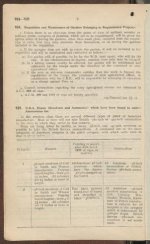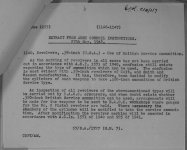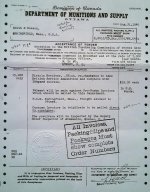Disclaimer - I do not own this gun. I did not take the photos.
I am considering the purchase of this revolver, S/N V419XXX.
My question is about the 38/380 marking. I have not seen this on other Lend Leases. There are also "JNG" (I think) stamped on the cylinders. Do these markings mean the gun was later modified for a different caliber?
SW LL - Album on Imgur
I am considering the purchase of this revolver, S/N V419XXX.
My question is about the 38/380 marking. I have not seen this on other Lend Leases. There are also "JNG" (I think) stamped on the cylinders. Do these markings mean the gun was later modified for a different caliber?
SW LL - Album on Imgur



